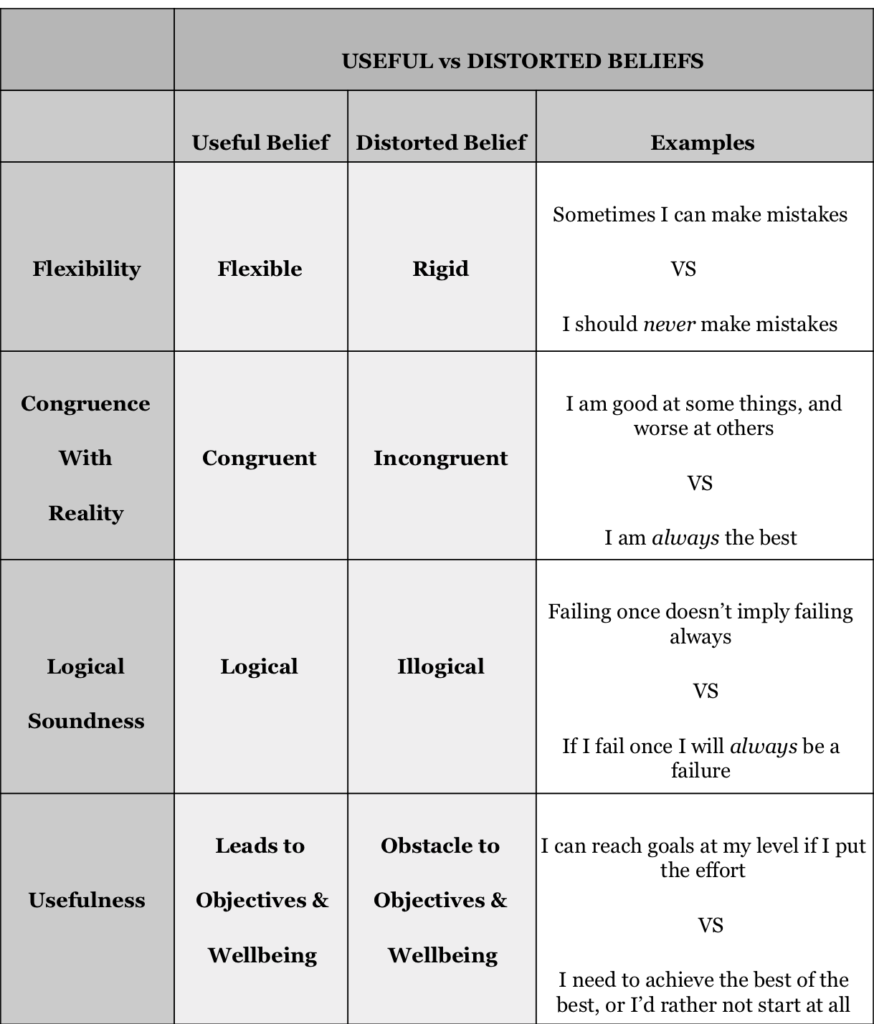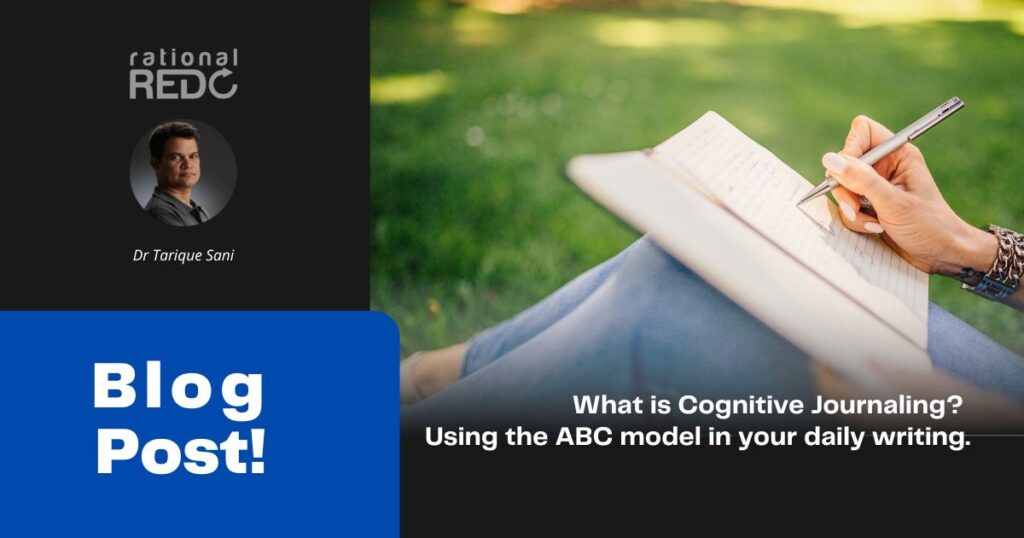I often ask my clients to write things in a journal. I had recently written about the benefits of Gratitude Journaling. This article describes how you can overcome your erroneous thinking pattern and negative emotions using what is known as Cognitive Journaling.
Why does writing about your thought and emotions help?
Most of us have been in a scenario where we don’t know what to do. This frequently leaves us feeling overwhelmed and unable to start solving the problem. Writing down your ideas and feelings is one approach to making sense of the confusion in your head and offering you a better understanding of what’s happening. You may better understand what matters and what doesn’t by grabbing a piece of paper or a diary and listing everything that is going on in your life. This includes anything from your job or school responsibilities to your social obligations and everything in between. A few advantages of Journaling are as follows:
- It slows down your thoughts, clears your mind, and prepares you for decision making
- It helps cope with stress
- Can explain your emotions
- Empower you to act
- Provides you with a time machine to review your personal growth
Combining this with some CBT (Cognitive Behavioural Therapy) principles can become all the more powerful. At its heart, CBT teaches you to question your erroneous thought patterns and generate solutions. Cognitive Journaling is all about applying this practice to your daily writing.
The ABC(DE) Model of CBT
Before we dig deep into the How-To of cognitive journalling, I would like to briefly explain the ABC model of thinking from CBT as the journalling will heavily rely on it. According to the ABC model, each life experience (also known as a cognitive event) is made up of a combination of three things:
- an event that activates (A). something that causes thoughts or feelings to arise.
- Our belief (B). thoughts, and conclusions we draw from the incident.
- The Consequences (C). the result of A plus B.
Every cognitive event, it is said, takes place in the ABC sequence. However, we frequently act on our beliefs (B) without even being aware of them. That gives the impression that the consequences or repercussions (C) directly result from the activating event (A).
Let us see an example.
I have to make a presentation at work -> I feel anxious
This is how most people think: A directly leads to C. However, there is a step B in between. I am anxious because of what I believe about A, my thoughts, and my judgment about what will happen when I make the presentation. The B here could be something like
I will make a terrible mistake while presenting
The spiraling can happen if I let my feeling of anxiety become another activating event kicking off a vicious cycle. So now the sequence can be like
I have to make a presentation at work -> I will make a terrible mistake -> I feel anxious -> I cannot tolerate being anxious -> I will not go to the office -> My boss will find out -> I will be fired…
The point to be remembered is A doesn’t lead to C, and it is helpful to become conscious of B and address that instead of directly trying to change A, the activating event or C is the consequence. We cannot control our environment or the people around us – many times A, the activating event is simply out of our control or harmful for us to try and change it. In our previous example, I could choose not to go to work, but that would not be good for my career if I kept avoiding work.
Pop culture thrives on toxic positivity and offers simplistic tips like choosing confidence and being happy always. Tell yourself not to be anxious. This doesn’t work!
As demonstrated by the ABC model of cognition, our emotions influence our thoughts. Therefore, we need to work on modifying our beliefs if we want to alter the feelings that we experience during cognitive events.
We can challenge the accuracy of the old belief, be open to the prospect of a better one emerging, try it on for size, and gradually learn to see if it holds true in reality. This is called Disputing (D) and the formation of a new Effective belief (E)
You will experience the ABCDE model being applied often if you take CBT with a professional, but you can use it for self-help using cognitive Journaling.
How to write a cognitive journal?
To get started with cognitive journalling, you don’t need anything special any diary will do but having a template helps; before that, let us look at some principles to keep in mind when you describe things or events.
Three principles of writing in a cognitive journal
Write facts rather than opinions. For example: “I scored a B in the test” vs. “My performance was terrible in the test” or “I felt happy at the party” vs. “The party was awesome.” Notice how the first statements can be verified as true or false and the second are just subjective to your opinion/
Be non-judgmental. As above, try not to intermingle your judgment in the description of the event, your thoughts, or your emotions.
Be detailed
The sequence of writing the ABC
Think of an event you’d want to write about in your diary. Remember that this technique helps you deal with powerful negative emotions, so pick an event that caused you to react strongly and that you’d like to look into more.
When writing, remember the mnemonic CAB for the sequence of writing.
Start with the Consequences (C). Write about the emotions and behaviors. When writing about emotions, try to use “I felt [insert emotion]” rather than “I was…”. Thus, write “I felt angry” instead of “I was angry.”
Describe the activating event (A). Write about the event which resulted in the above emotions and behaviors. Again try to stick to the facts rather than opinions.
Figure out the belief (B). This can sometimes be easy with very overt thoughts but often very subtle and challenging to figure out. Don’t be dismayed. It is a skill that can be learned.
Try using the following questions to help you with the process
- What did this incident mean to me?
- Why did I act that way or feel that way?
- What did I ponder after the incident that could have prompted that emotion or action?
- What was going through my head at the time?
- Reverse check: Given the belief, I’ve discovered, would I foresee experiencing this particular result?
You may find yourself thinking about the thought that comes up, probably kicking off a spiral. Please stay away from them in your writing, at least at the beginning of your writing journey.
Finding the belief is the most crucial step in this process since it is the only thing you can influence.
Challenging your belief
A belief can be challenged by examining its truthfulness, casting doubt on it, and coming up with a better solution.
Once you’ve discovered your belief, analyze it by reflecting in a diary on the following questions:
- Is this belief inflexible and all-or-nothing, or is it flexible enough to accept all situations?
- Is this view reasonable, or does it rest on flawed reasoning?
- Is this idea supported by reality and consistent with knowledge and experience, or is it inconsistent and unfounded?
- Is this idea helpful in achieving my goals? Does it aid in improving how I feel about myself and my life?
Answering these questions might not always be easy, partly because you might have already put emotional energy into them. To help you gain greater insight into the thoughts, you are analyzing. It may be helpful to pretend that they belonged to someone else.
Formulate a useful alternate belief
Which alternative thoughts are there that I could consider? Which alternative viewpoint is reasonable, grounded in reality, adaptable, and helpful in helping me achieve my objectives and feel good?
You may have to consider several options, but one or more will eventually fit. Consequently, when you journal cognitively, repeat this final step as often as necessary.
Although it may seem complicated at first, you will eventually develop the skill of challenging your thoughts. You will ultimately be able to carry it out automatically while going about your usual activities.
Here is a table that you can use to check if your new belief is “useful.”

Progress gradually
Remembering that Cognitive Journaling is a skill that takes time to master is very helpful. Progress slowly. A suggested schedule is as follows, but you can take it as slow as you want.
- Week 1 Get into the habit of writing in a C-A-B pattern
- Week 2 Add belief identification
- Week 3 Start challenging your beliefs
- Week 4 Start building and practicing useful beliefs
Measuring outcomes
Please keep it simple. Just remember not to expect radical improvements but every week or every month, reflect on the following
- Have I at least been able to recognize a few unhelpful beliefs?
- Have I at least occasionally been able to discover new, better beliefs?
- Have I at least temporarily felt better?
- Have I changed how I’ve acted?
- Am I at least a little bit enjoying the practice?
Bonus: Anchoring
When you are extremely overwhelmed by your emotions, it can be beneficial to practice Anchoring before you attempt to write your cognitive journal. Here are a few resources on anchoring that you will find helpful
Conclusion
More self-awareness can help you improve your distorted thinking to more useful thinking patterns. Remember to adopt an attitude of a scientist and experiment with Cognitive Journaling. Sometimes you will feel that things are not improving or had improved but now regressed. This happens as a part of the normal human process. Seek professional help if you feel the need. If you want to talk more about the topic, have a virtual coffee with me.
References: https://betterhumans.pub/cognitive-journaling-a-systematic-method-to-overcome-negative-beliefs-119be459842c , https://iveronicawalsh.files.wordpress.com/2012/06/an-intro-to-cbt-journalling-extract.pdf ,

I help IT executives overcome anxiety, overwhelm and procrastination, unleashing their potential using 1:1 CBT sessions | Assertiveness Training | Burn-out Prevention | Beat Perfectionism | Crush Imposter Syndrome
